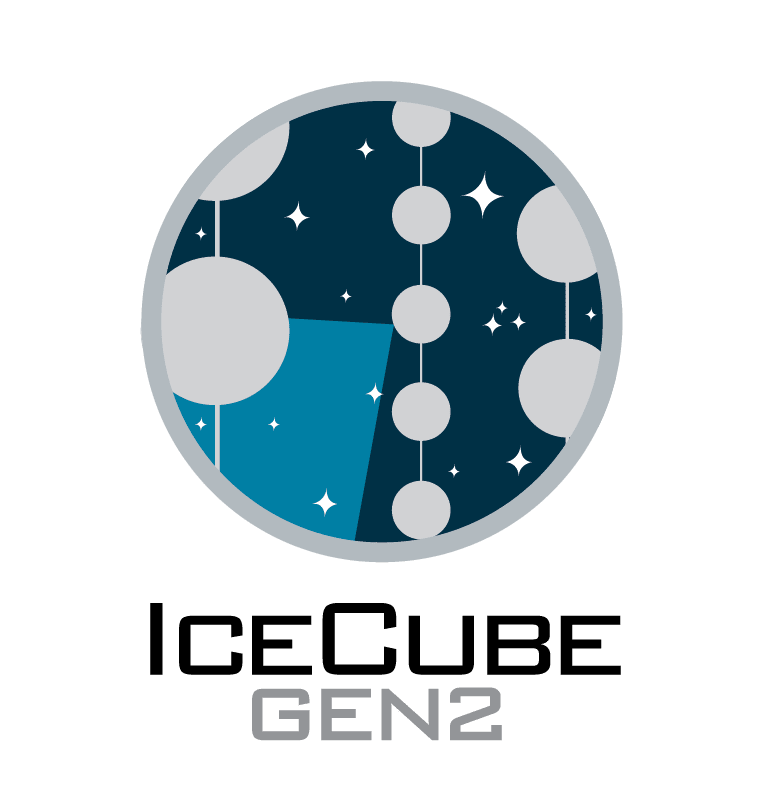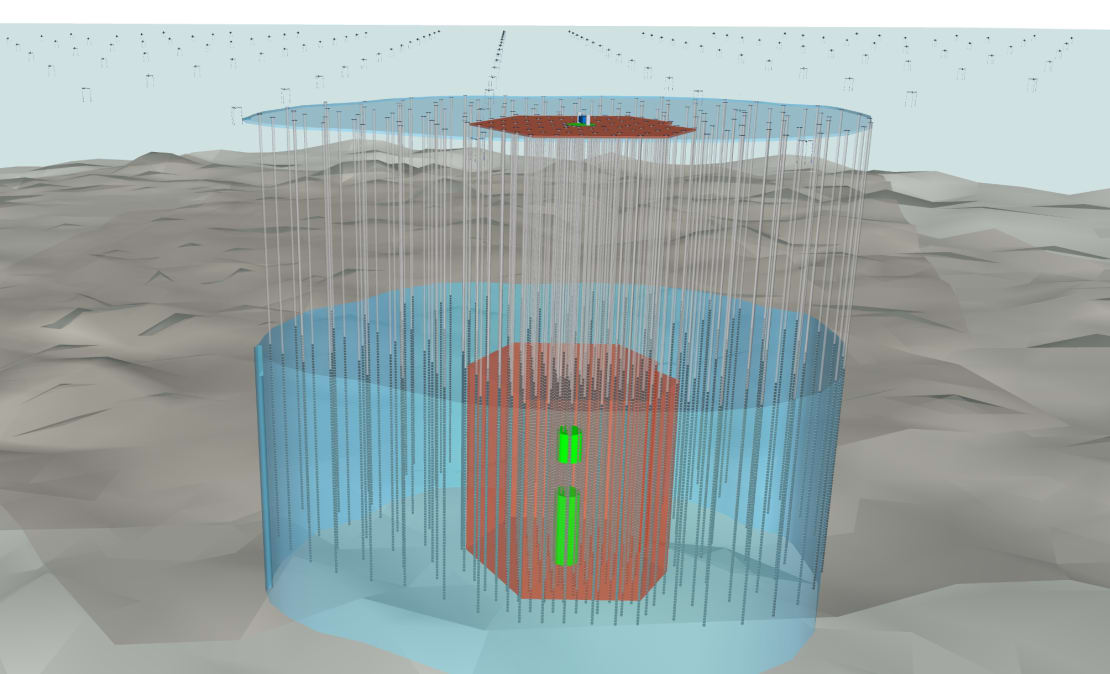On December 18, 2010, IceCube’s final DOM (digital optical module) was lowered into a hole in the ice at the South Pole. After seven years of construction—and many more years of international collaboration around design and planning—the IceCube Neutrino Observatory was complete. The detector now had 5,160 DOMs on 86 cables (“strings”) frozen into a cubic kilometer of the Antarctic glacier ice, waiting for signals from tiny, ghostlike particles from outer space called neutrinos.
Since then, IceCube has done exactly what it was built to do: use astrophysical neutrinos to peer into the otherwise indiscernible universe, where light and other particles are obstructed. In the past decade, the IceCube Collaboration has published over 150 papers on astrophysics, neutrino physics, dark matter, glaciology, cosmic ray physics, instrumentation, and much more. Most notably, IceCube detected the first high-energy astrophysical neutrinos in 2013 and led the effort in the first-ever identification of a source of extragalactic neutrinos and high-energy cosmic rays in 2018—a discovery that proved the potential of neutrinos in multimessenger astronomy.

But to make new physics discoveries and continue to probe the mysteries of the universe, bigger and more sensitive detectors are needed. Enter IceCube-Gen2.
In a white paper recently submitted to the Journal of Physics G, the international IceCube-Gen2 Collaboration outlines the need for and design of a next-generation extension of IceCube. By adding new optical and radio instruments to the existing detector, IceCube-Gen2 will increase the annual rate of cosmic neutrino observations by an order of magnitude, and its sensitivity to point sources will increase to five times that of IceCube.
“IceCube-Gen2 will build upon two discoveries by IceCube,” says Albrecht Karle, an IceCube-Gen2 coordinator based at the University of Wisconsin–Madison. “One is the presence of a large cosmic neutrino flux at high energies; the other is the exceptional clarity of the ice. By optimizing the design, we can scale the detector up by one order of magnitude with very similar instrumentation.”
Projected to be completed in 2033 with construction costs around $350 million, IceCube-Gen2 is designed to address some of the biggest questions in multimessenger astronomy and neutrino physics.

“Publishing a white paper is an important milestone for every future research project,” says Markus Ackermann, head of the IceCube group at DESY in Zeuthen, Germany. “With this document, we want to share our enthusiasm about the scientific potential of IceCube-Gen2 with the broader scientific community and outline a path toward the realization of this exciting project.”
IceCube-Gen2’s design is a major endeavor that will entail years of construction. The first step is already underway with the NSF-sponsored IceCube Upgrade, which will add seven strings with new and enhanced optical modules to DeepCore, the center of the IceCube array. The next phase will be to add the rest of the 120 new strings, which will be spaced about 240 meters apart in a sunflower-like pattern around IceCube that is designed to encompass a large volume while avoiding “corridors” through which misleading signals may pass. The new optical modules, which should be able to collect nearly three times as many photons as current IceCube DOMs, will be spaced 16 meters apart on the string, between 1.3 and 2.6 kilometers below the surface, resulting in a total detector volume of nearly eight cubic kilometers.
Near the surface, IceCube-Gen2 will have a new radio component made up of detector “stations” covering an area of approximately 500 square kilometers. Each station consists of three strings holding radio antennas that will be deployed close to the surface of the ice. This array will detect radio emission generated in the ice by particle showers, allowing scientists to reconstruct the energy of the shower and arrival direction of the neutrino.

IceCube-Gen2 is designed to address some of the mysteries that persist in neutrino and multimessenger astronomy. Specifically, the extension will allow us to resolve the high-energy neutrino sky at energies higher than ever before (energies up to EeV, or 10^18 eV), investigate cosmic particle acceleration through multimessenger observations, reveal the sources and propagation of the highest energy particles in the universe, and probe fundamental physics with high-energy neutrinos. These advancements will shape the next era of multimessenger astronomy and revolutionize our understanding of the high-energy universe.
“Over the past 30 years we have seen the exciting evolution of neutrino observations, from first neutrino detections using early instruments deployed deep in glacial ice sheets to the long-sought discovery of high-energy astrophysical neutrinos with IceCube,” says Darren Grant of Michigan State University, spokesperson for the current IceCube Collaboration. “IceCube-Gen2 represents the timely opportunity to build on existing expertise and technological advances to move from the discovery era to precision neutrino astronomy.”
The collaboration already knows that IceCube-Gen2 is logistically possible. The construction of IceCube demonstrated the ability to build and deploy instruments on time and on budget in an Antarctic glacier at the South Pole—one of the most inhospitable environments on the planet. While there will be logistics challenges in such a large project, the collaboration is prepared to meet them, always taking into account that South Pole is hosting a multitude of scientific projects with their own logistical needs.
From a global perspective, IceCube-Gen2 will transform the multimessenger astrophysics landscape; once built, the extended detector will join a network of other large-scale observatories that survey the sky in gamma rays, gravitational waves, and cosmic rays.
“Neutrinos are but a recent addition to the palette of tools that help us explore the cosmos,” says Olga Botner, head of the IceCube group at Uppsala University in Sweden. “While IceCube opened a new window onto the distant, violent universe, with IceCube-Gen2 we will look further, with more precision and over a larger energy range. IceCube-Gen2 will play an essential role in the era of multimessenger astronomy, paving the way for new, groundbreaking discoveries.”
+ info “IceCube-Gen2: The Window to the Extreme Universe,” IceCube-Gen2 Collaboration: M G Aartsen et al., J. Phys. G: Nucl. Part. Phys. 48 060501 (2021), iopscience.iop.org, arxiv.org/abs/2008.04323